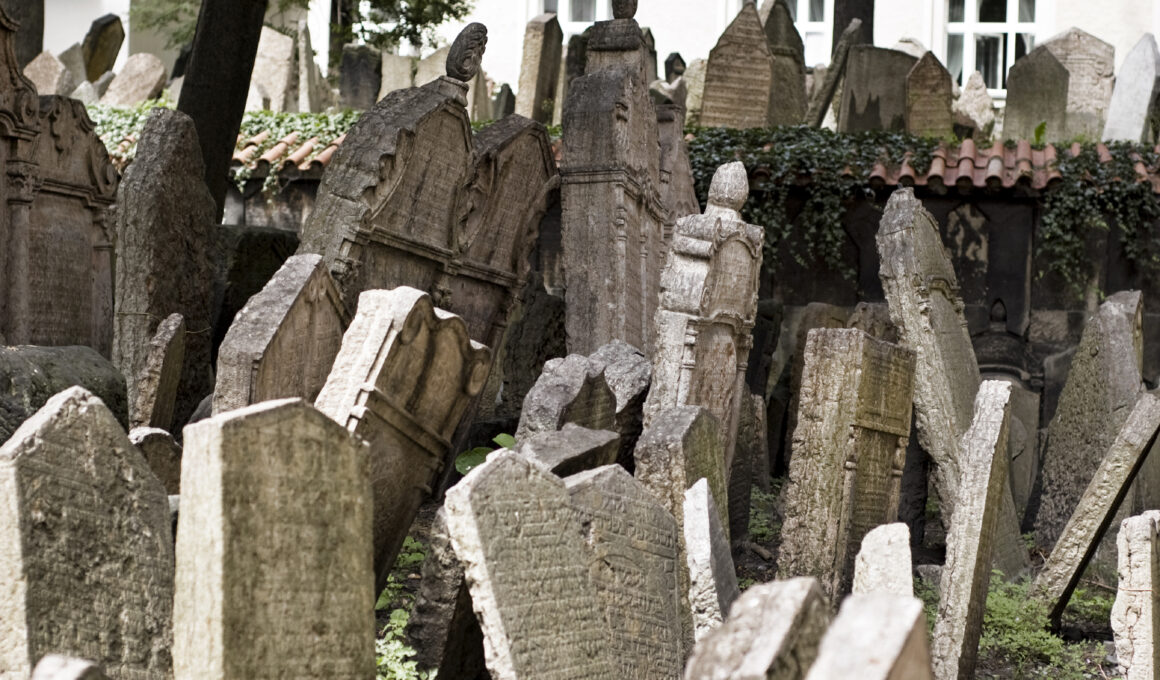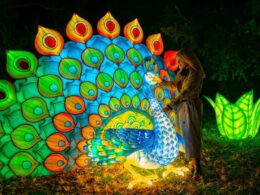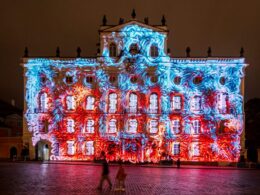Table of contents Show
The history of the Old Jewish Cemetery in Prague
If you’re curious about history, continue reading as we take you through the history of the old Jewish cemetery in Prague, one of the largest Jewish cemeteries in Europe and one of the world’s surviving ancient Jewish burial grounds. According to National Geographic, this cemetery is among the ten best cemeteries worldwide.
Throughout the centuries, the cemetery’s land coverage grew through the purchase of nearby plots. But the space still wasn’t big enough, being the only burial place in the area. As Jewish custom forbids the transfer of graves, residents decided to bury their loved ones’ remains on top of each other.
Up to 100,000 bodies are believed to have been buried up to 12 layers deep in the ground beneath 12,000 tombstones. This explains why the cemetery looks like a jumble of old tombstones densely and unevenly spread on the grounds. It’s considered a part of the Prague Jewish Museum complex, which also includes six synagogues.
This is where well-known Jewish personalities, including Rabbis, entrepreneurs, historians… Prague’s Jewish museum manages this historic cemetery.
It is situated in Josefov, the Jewish Quarter, also known historically as the Jewish town, and was founded back in the 15th century. For years this cemetery was the only cemetery where Prague’s Jews could be buried.
Mysterious historical places in Prague

Prague has many attractions that you can tour yourself or you can book a tour with a renowned company. They include cathedrals and castles; the monuments and brides are emblematic places that stand out for their particular history or that give the city an aura of mystery.
The capital of the Republic of Czech is well-known for the cold war’s mysterious deaths, battles, killings, and burning torches. Prague has a lengthy and turbulent past. And it certainly wasn’t “idyll”: The Czech metropolis has experienced many conflicts in the past, some of which were crucial milestones in European history.
The Jewish custom did not allow its people to abandon graveyards. And since the Jewish community was not permitted to buy more land to increase this ancient cemetery, massive tombs were overcrowded into a limited field.
Historical facts about the Old Cemetery in Prague
The cemetery dates back to the first half of the 15th century, with the oldest preserved tombstone belonging to Jewish rabbi and poet Avigdor Kara, who died in 1439. In 1784, Emperor Joseph II issued a decree prohibiting the operation of cemeteries within the city’s borders, particularly in residential areas, due to health risks. This forced the cemetery to close, although the last of the gravestones set up here bear the year 1787.
Shortly after the Nazis occupied then Czechoslovakia in 1939, synagogues and other historical sites were destroyed but the cemetery and the Jewish Museum’s artifact collection were untouched. The Nazis had reportedly preserved these two locations on purpose amid plans to put up a “Museum of an Extinct Race” in Prague, which didn’t materialize.
The Old Jewish Cemetery is one of the largest of its kind in Europe.
Why is the Old Jewish Cemetery in Prague worth a Visit?
If you would like to visit this ancient structure or if you would prefer a tour, below places are worth your time:
Monument of world importance

You can stroll among the crowded tombstones as the experience becomes a lasting memory.
You will see the monument’s engravings, most of which are of great artistic and historical value. For instance, it is among the most impressive sights when snow in winter covers this old cemetery.
The cemetery grounds are considered sacred, and during its inauguration a special dedication ceremony occurs. Jewish traditions dictate that the graveyard is holy and should never be disturbed in all eternity. Having burial grounds is a number one priority for any newly found Jewish community.
The link between the body and the soul of a human after a demise is an important aspect since the jews believe in the soul’s eternity. Thus, digging up corpses, taking advantage of a dead body or grave, etc., are not permitted in dead people’s presence.
Jewish communities have Chevra Kadisha burial societies that make certain every Jewish community member is properly buried at the society’s expense.
12,000 tombstones
This cemetery has up to 12,000 headstones yet about 100,000 souls lay here. The limited space made covering the existing graves with earth unavoidable in order to place others on top.
Each twisted headstone in Europe’s third-oldest Jewish cemetery has a tale to tell, screaming a haunting song. There are tales of floods, fires, and pogroms.
The tombstones are also a reminder of the sixteenth century when Rudolf II the Emperor reigned, and not forgetting the stories of the Jews in defense as the Swedes attacked in 1648, throughout the thirty war years. Yes, so many tales the 12,000 headstones took to their graves.
The headstones of Jews laid to rest at the cemetery during the 16th and 17th centuries feature symbols carved in the Renaissance and Baroque styles. The designs indicate the religious status of the deceased—those with two hands belonged to the family of temple priests. Gravestones with a water kettle or musical instruments meant the deceased were helpers of the priestly Levi tribe.
The engravings also stood for family names—Rabbi Loew’s marker has a lion while that of historian David Gans contains the Star of David and a goose. The motifs also represented professions such as a book for a cantor, a mortar for a pharmacist, and a pair of scissors for a tailor.
Famous people buried
One famous figure laid to rest in this site is Judah Löw, who was a Rabbi and a man of great importance in 16th-century Europe. The other jews credited him with creating the Golem, a peculiar creature that had supernatural powers.
According to legend, this clay giant acted as a defender to the Jewish ghetto from attacks against its people.
The grave of this Talmudist, philosopher, and mystic is now a destination of pilgrimage. Jews worldwide visit here, especially on his death anniversary on September 17, 1609. He is said to have mystical powers, and this is the reason why small slips of paper with written content and wishes are often put around him as people hope that will meet their desire. This is a typical tradition in Jewish cemeteries. Also buried here is the 18th-century David Oppenheim who was a Rabbi, David Gansa, historian, mathematician, and astronomer, was put to rest here in 1613, Rabbi Mordechai Maisel (1528-1601), an entrepreneur and influential former mayor of the Prague Jewish Quarter. Emperor Rudolf II granted him special privileges for financing his troops during his wars against the Turks.
Elders Zion said to gather here to plan how they would dominate to rest in this cemetery. Its goal was to account for the killings of the Jews located in pogroms. This fact inspired renowned writers like Umberto Eco, who wrote it in his novel Los de Praga.
Sanitization of the Jewish Quarter
Jews who migrated to Prague from other parts of Europe since the 10th century were forced to settle within a walled section of the city from the 12th century due to pogroms or violent riots aimed to expel them from the country’s capital.
Members of the Jewish community went through seasons of persecution and favor from European leaders between the 15th and 16th centuries. This “Jewish ghetto”—found between the Old Town Square and the Vltava River—survived a plague in 1680, the fires of 1689 and 1754, and the expulsion order of the Queen Maria Theresa of Austria in 1744.
Restrictions toward the Jews eased from Joseph II’s rule from 1780 to 1790. In 1852, they were allowed to live outside the ghetto and purchase their own land. By then, the Jews numbered over 10,000. The area was renamed Josefov, which is also the Jewish Quarter’s current name.
But by this time, the area was crowded with slum dwellers. A sanitation act was signed in the 1890s to turn Josefov into a residential-commercial district. With city administrators redesigning road networks, the Jewish community had to give up part of the cemetery when clearance activities began. Remains were exhumed and transferred to the Nefel mound fronting the Klausen Synagogue. But other than that, the rest of the cemetery was among the historical locations that were spared from demolition.
How to Get There
As the cemetery belongs to the museum complex, visitors have to purchase tickets at the Spanish Synagogue, the Klausen Synagogue, or the Pinkas Synagogue to enter. The Jewish Museum is a five-minute walk from the Jan Palach Square at the Old Town, where many walking tours of the Jewish Quarter begin. It is also a short walk from the Prague Main Railway Station’s Staroměstská stop and Charles Bridge. Also, you can opt for public means since buses and tram lines leave Na Knížecí, approximately every 20 minutes. You can easily join a tour of the Jewish Quarter that includes a visit to this historic cemetery.
Rabbi Judah Loew ben Bezalel, also known as the Maharal of Prague, and Mordecai Maisel, a prominent figure in 15th-century Jewish history, are celebrated at the Jewish Museum for their significant contributions to Jewish culture and heritage.
More information about ticket prices, opening hours (which change seasonally), and group tour protocols are available on the Jewish Museum in Prague website.
After reading this article, we are sure that you now know the history of the old Jewish cemetery in Prague. As you have read, the Jewish Old Cemetery with over 10,000 bodies laid to rest here is among the earliest Jewish burial places worldwide, with an incredible history to back it up.
Preserving the Past: Unveiling the Reverence of Prague’s Jewish Quarter
The Jewish Quarter holds a significant place in Prague’s history, deeply intertwined with its cultural tapestry. Renowned writers like Franz Kafka have drawn inspiration from this historic area. The synagogue in the Jewish Quarter stands as a testament to the enduring legacy of Rabbi David Oppenheim, a revered figure whose influence resonates through time. This sacred place not only serves as a place of worship but also as a repository of stories and traditions that have been passed down for generations. It was within these hallowed walls that Rabbi Judah Loew, another prominent figure, left an indelible mark on the community through his teachings and guidance. The synagogue stands as a living connection to the past, a space where the echoes of prayers and the wisdom of sages continue to inspire and uplift those who visit, offering a glimpse into the rich heritage of the Jewish Quarter and its vibrant history.





